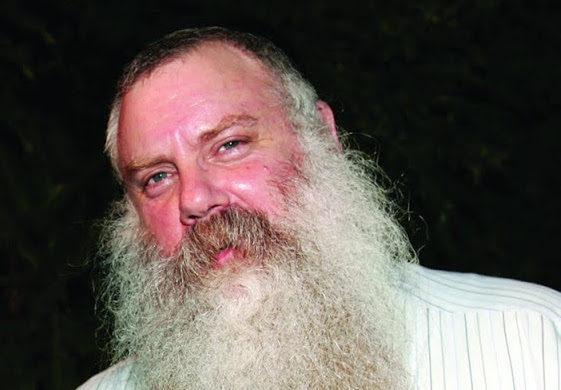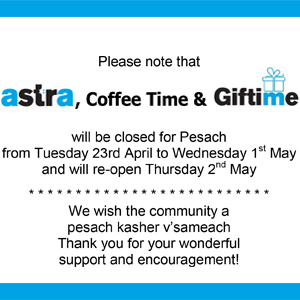A sandwich is a food item consisting of one or more types of food, such as vegetables, sliced cheese or meat, placed on or between slices of bread, or more generally any dish wherein two or more pieces of bread serve as a container or wrapper for some other food. The sandwich was originally a portable food item or finger food which began to be popular in the Western World. Today sandwiches in various versions are found worldwide… Wikipedia.com
Wikipedia has it that in the 1700s, there was a member of the English nobility who developed a culinary innovation that allowed him to eat cold cuts while playing cards, without getting his hands greasy from the fat of the meat. His name was John Montagu, also known as the 4th Earl of Sandwich — hence the name of his legacy.
Every Passover night, after eating matzah alone and marror, the bitter herbs, alone, we customarily eat matzah and marror again, but this time together, with the marror between two pieces of matzah in what looks like a sort of sandwich. Why?
Because about 2100 years ago, there was a Jew named Hillel who held that the matzah and marror must be eaten together.
But why do we need to announce, This is what Hillel did…? — just eat it! There are many mitzvos which we do in several ways so as to cover all opinions on how exactly to do them. But we don’t declare this fact while we’re actually doing the mitzvah.
For example, when we blow the shofar on Rosh Hashanah, we don’t announce in synagogues that “we are now sounding the shofar according to the opinion of Rabbi Abahu, who established the following pattern of sounds.”
Why is it specifically with the matzah and marror that we not only try to do it according to Hillel’s opinion — but also add an announcement: “Thus did Hillel!” What’s the point?
The Talmud tells us that towards the end of the Second Temple Era, about 100 years before the Destruction, it happened once that Passover eve fell on a Saturday night — and the Jewish leaders didn’t know whether it was permitted to sacrifice the Passover Lamb on Shabbos.
To preface: There were two kinds of sacrifices in the Temple: communal sacrifices and personal sacrifices. Communal sacrifices such as the two daily Tamid sacrifices were offered every single day, including Shabbos.
Personal sacrifices, however, were prohibited on Shabbos — only communal sacrifices overrode Shabbos.
Now here came the question: Was the Passover Sacrifice a personal sacrifice — which was forbidden on Shabbos? Or was it a communal sacrifice — which overrides Shabbos?
The leaders at the time had forgotten the law: Is it permitted or prohibited? The Talmud tells us: They said: “Is there not a single individual who knows whether Passover overrides Shabbos?!”
Personal sacrifices, however, were prohibited on Shabbos — only communal sacrifices overrode Shabbos. Now here came the question: Was the Passover Sacrifice a personal sacrifice — which was forbidden on Shabbos? Or was it a communal sacrifice — which overrides Shabbos? The leaders at the time had forgotten the law: Is it permitted or prohibited? The Talmud tells us: They said: “Is there not a single individual who knows whether Passover overrides Shabbos?!”
They sent for him and called him, and asked him, “Do you know if Passover overrides Shabbos or not?”
So Hillel replied that, to the best of his recollection, we do indeed bring the Passover sacrifice on Shabbos, adding, “That’s what I heard from Shmaya and Avtalyon.”
The Talmud tells us that They immediately seated him at the head and appointed him leader over them — in other words, that Hillel rose to greatness on that very day, on a Passover eve approximately 2100 years ago.
Until then, he had been anonymous — some guy named Hillel the Bavli, some new immigrant from Iraq who wouldn’t even have been recognised by the school guard except for the time that he froze to the skylight at the Yeshiva (another story, another time).
Now, in just one day, the wheel of fortune suddenly turned and Hillel was appointed president, the leader of the Jewish people.
It’s a very nice story. But why was Hillel put into the Haggadah? It’s enough that we eat his sandwich. Why do we explicitly repeat Thus did Hillel! every year?
The reason is this: Hillel was one of the most beloved people in Jewish history.
Hillel loved everyone. There are endless stories about his great patience, about how he’d greet everyone with a cheerful face and with happiness.
But Hillel’s greatest claim to fame came when he coined his saying: Don’t do to your fellow what you personally hate — this is the entire Torah.
Hillel was saying that whatever you don’t want people to do to you, don’t do to others — in contrast to the popular saying, Do unto others as you would have others do unto you.
This is the entire Torah. It was the first time in Jewish history that a Jewish leader came along and said that to love another person is the entire Torah.
Thus, Hillel became a symbol of Ahavas Yisroel, of love of fellow Jew — and even in the non-Jewish world, the tales of Hillel’s patience and his sayings are well known and accepted.
That’s why the Jewish People returned that love to him — perpetuating him on the day upon which he rose to greatness and saying Thus did Hillel!
So Seder night, my friends, as we celebrate our Freedom, and declare Thus did Hillel! as we eat our Hillel sandwiches, we should bear in mind not just the sandwich that Hillel invented and try to do the mitzvah as he did.
Thus did Hillel! is a call to each of us, whoever he or she may be, to remember how one must love another Jew — to be patient like Hillel, humble like Hillel, and above all, loving of every Jew like Hillel — to remember that the entire Torah is really nothing more than a commentary on the mitzvah of loving one’s fellow Jew.









